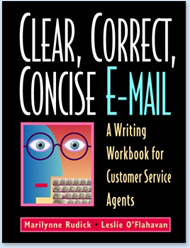For years, customer care organizations have been as scared of social media as water-phobic summer campers staring at the high dive. “What if customers gang up on us? What if we get trolled? What if one of our agents gives the wrong answer and all 25,000 followers see it?” Well, all those things have indeed happened, and we’ve learned from them. Companies have done more than survive in social customer care, they’ve thrived. The years have passed, and we’ve learned to staff, manage, and measure social care. Most importantly, we’ve learned how to write to customers in these channels, so we can give sincere, personal service with everyone in the world (on social) watching.
Yes, we should continue working hard to improve, but it’s time to acknowledge that great things happen in social customer care, things that don’t happen anywhere else. If we stay scared, if we focus too much on the risks inherent in social customer care, we’ll miss the extraordinary rewards companies gain when they do social right.
Here are five great reasons you shouldn’t be scared to write to customers in social media.
CUSTOMERS CHAMPION YOUR COMPANY
When you’re honest, reliable and responsive to customers in social channels, your customers will stand up for your company when haters attack. McCormick Spices recently experienced this customer advocacy during a “heated” social media conversation it had in an Amazon review of its product, Gourmet All Natural Korean Style Red Pepper.
Customer Dan asked, “Is this really certified organic or is that a lie? I hate liars.” Erica, McCormick’s expert social customer care agent, calmly replied, “Hi, Dan. While we do offer organic products, the Gourmet Korean Style Red Pepper is all-natural and Non-GMO. It is not certified organic.”
But customer Dan wasn’t finished with his fury. Dan replied, “Just admit you are a liar that just got caught in a lie. Next question is what else are you lying about, you liar?”
A scared company might have been sweating social media at this point. After all, Amazon is a huge marketplace; a blooper in social customer care would be difficult to recover from. But McCormick needn’t have worried a bit. A few days later, this comment from customer Epictater appeared below Dan’s accusations: “Hi, Erica. I’m buying this product because of the polite and accurate way you handled this troll. Nowhere did I see the word ‘organic’ in McCormick’s product description or on your pictures of the product label. Trolls’re gonna troll, though.”
In social, our customers do notice when we’ve been calm with an unreasonable person or when we’ve handled an irrational accusation with grace. While social may be scary because everyone is watching, the fact that everyone is watching can reveal our protectors, too.
YOU CAN SLIDE INTO YOUR CUSTOMERS’ FRIEND ZONE
Companies that are great at social customer care come across as personable and likable, and customers make friendly connections with companies like that. What do friends do in social media? They share.
One of the sweet benefits of social care is the stream of friendly, just-thought-you’d-like-to-see-this posts, like this tweet from customer JPL to Southwest Airlines. He’s not complaining. He doesn’t need help tracking a lost bag, and he’s not asking the airline to refund a fee. He just thought the mountains looked pretty from the sky and wanted to share it with Southwest. You know, like friends do.
YOU’LL HELP MORE AND DEFEND YOURSELF LESS
We’ve had to develop a new writing skill to succeed in social care: We’ve had to learn how to accept a negative product review graciously and suggest a more suitable product in response. This is an advanced customer service skill in any channel, but pulling it off in social, with thousands of paying customers—and prospects—watching, is a tightrope walk!
Here’s what the disappointed customer “sm blonde” wrote to accompany her one-star Amazon review of L’Oréal hair color, “Just dyed my hair and left the product on for 40 minutes. My gray hair is literally exactly the same color as it was before I died my hair.”
L’Oréal’s response is a model of acceptance, explanation, and empathy.
Defending our company’s products or policies is a barrier to truly connecting with customers. At some level, defending yourself implies that the other person’s perspective isn’t valid. Social care has forced companies to learn to take their customers’ perspective as-is, without pushing back. The result? We can help our customers more. L’Oréal’s done everything it can to make sure customer “sm blonde” gets the right hair color and the right results. That’s a great feeling.
CUSTOMERS SHOW HEART-WARMING KINDNESS
Yes, customers can be foul and hateful on social media, but they can also be extraordinarily kind. When we create social customer care channels that are like comfortable online living rooms, some customers sit down and have civil conversations! Look at this little Facebook lovefest between two Crayola customers, Jeanette and Michelle. They’re just being kind to each other. The positive tone of Crayola’s social care responses created this climate, and customer connections grew.
CUSTOMERS BELIEVE US WHEN WE SHOW WE’RE SINCERELY SORRY
Most companies are lousy at saying “We’re sorry.” And those CEO non-pology letters that PR puts out after a crisis are poor examples to follow. But one tweet at a time, social care agents do apologize to customers sincerely. When this happens, customers believe us. Even when we’ve messed up, a genuine “I’m sorry” will keep customers on our side.
In this Twitter conversation, @SlackHQ uses plain wording to apologize to the customer: “Sorry about this, Giovanni.” But their elaboration makes the apology sincere. They explain that they’re working on the problem Giovanni complained about, and they offer the webapp as a workaround. In turn, Giovanni congratulates them and offers to help. This is pretty remarkable, as Slack was basically malfunctioning at the time of this social care conversation!
Great Things Happen in Social
If you’ve been in customer care for a while, you can probably remember trying to convince your company’s C-suite that social care was a good idea, not a minefield of risk. You may have gazed at your best phone agents and wondered which—if any—could make the switch to social. As the years passed, your social team had to weather storms of misinformation and hordes of trolls and bandwagoners.
Social is a lot to handle, and we’ve proven we can handle it. Social media is also where our best customer care efforts yield results that go beyond the bottom line. In social, we can create community, build rapport and enjoy each other. See? Great things happen in social. No need to be scared.
— — — — — —











0 Comments